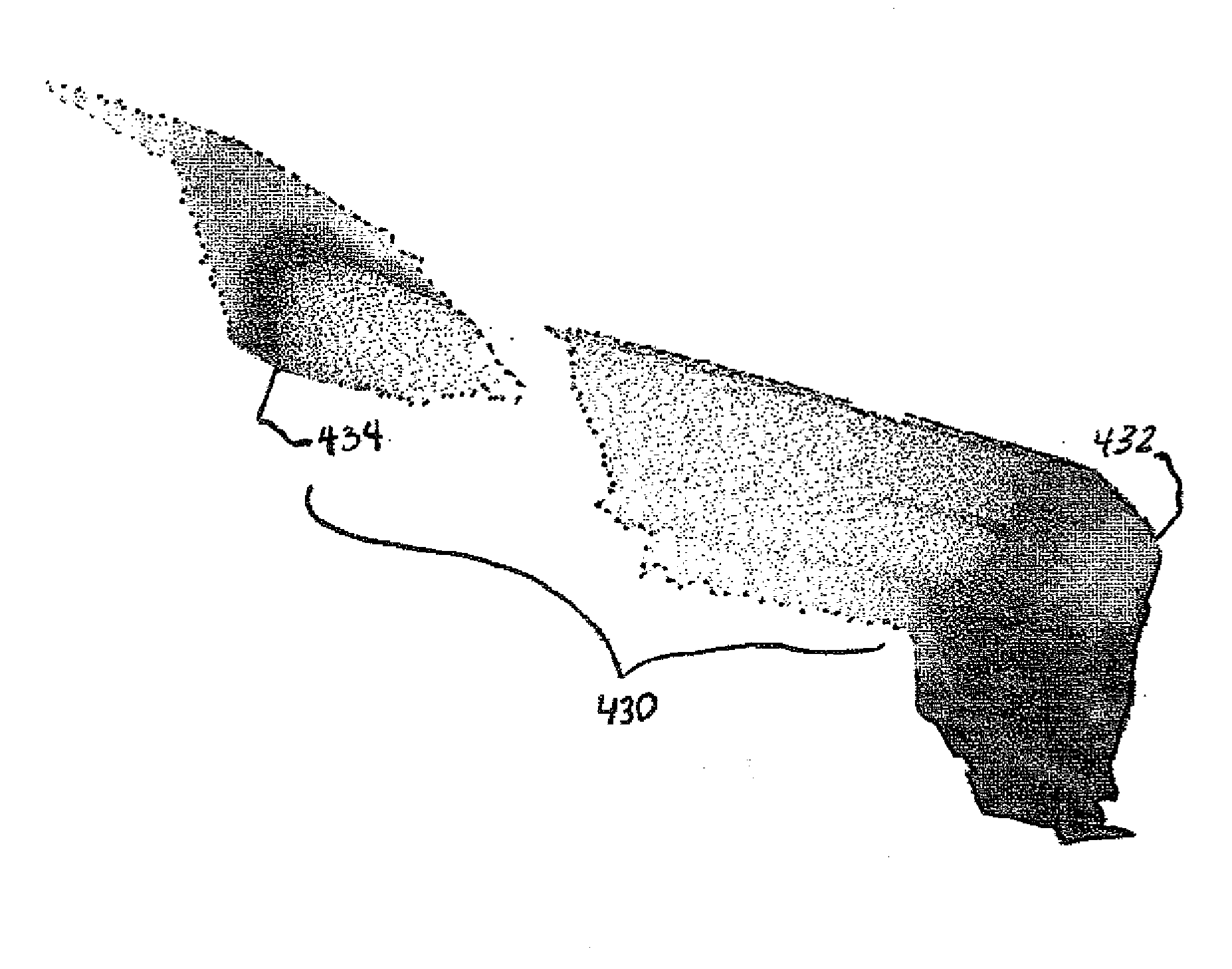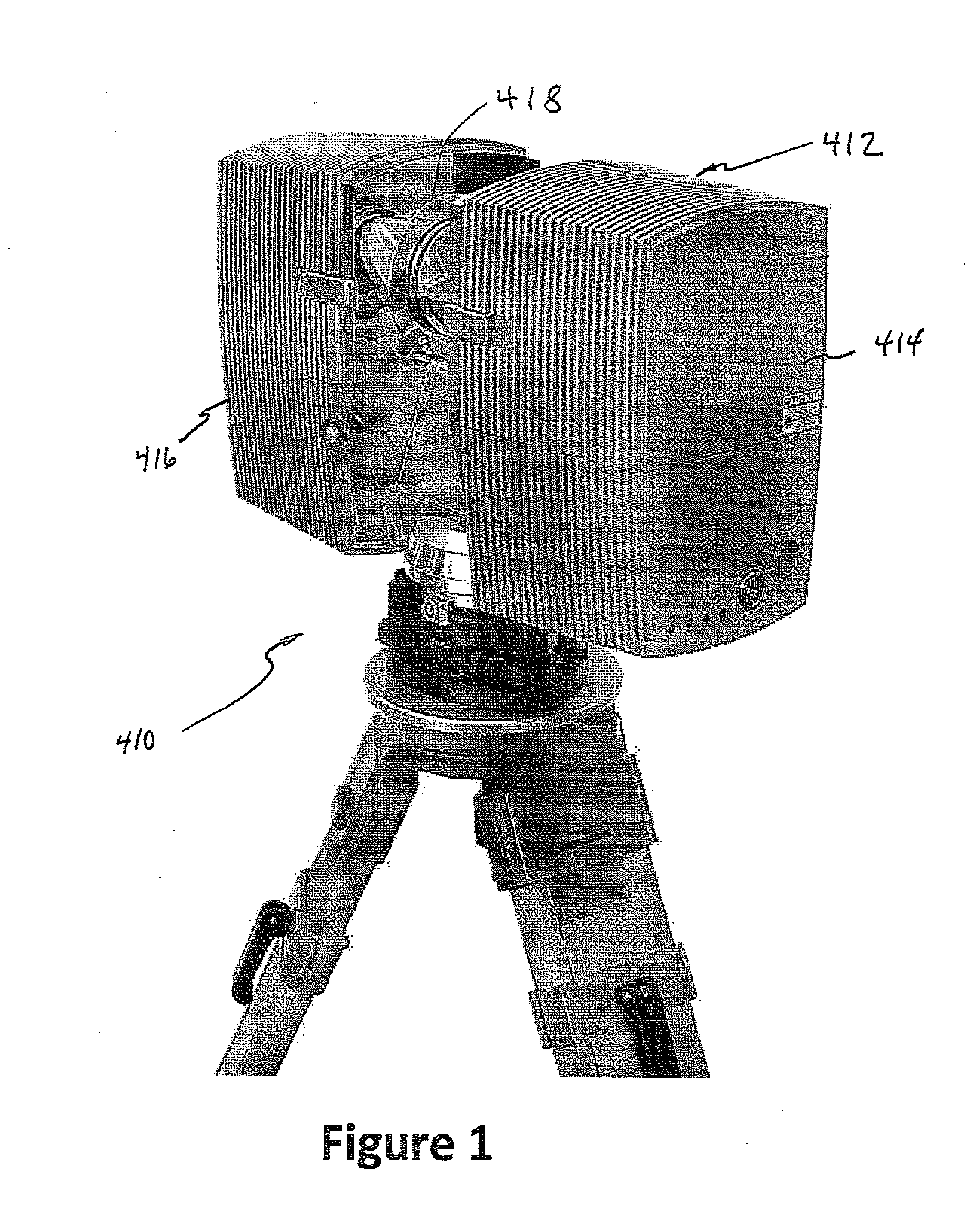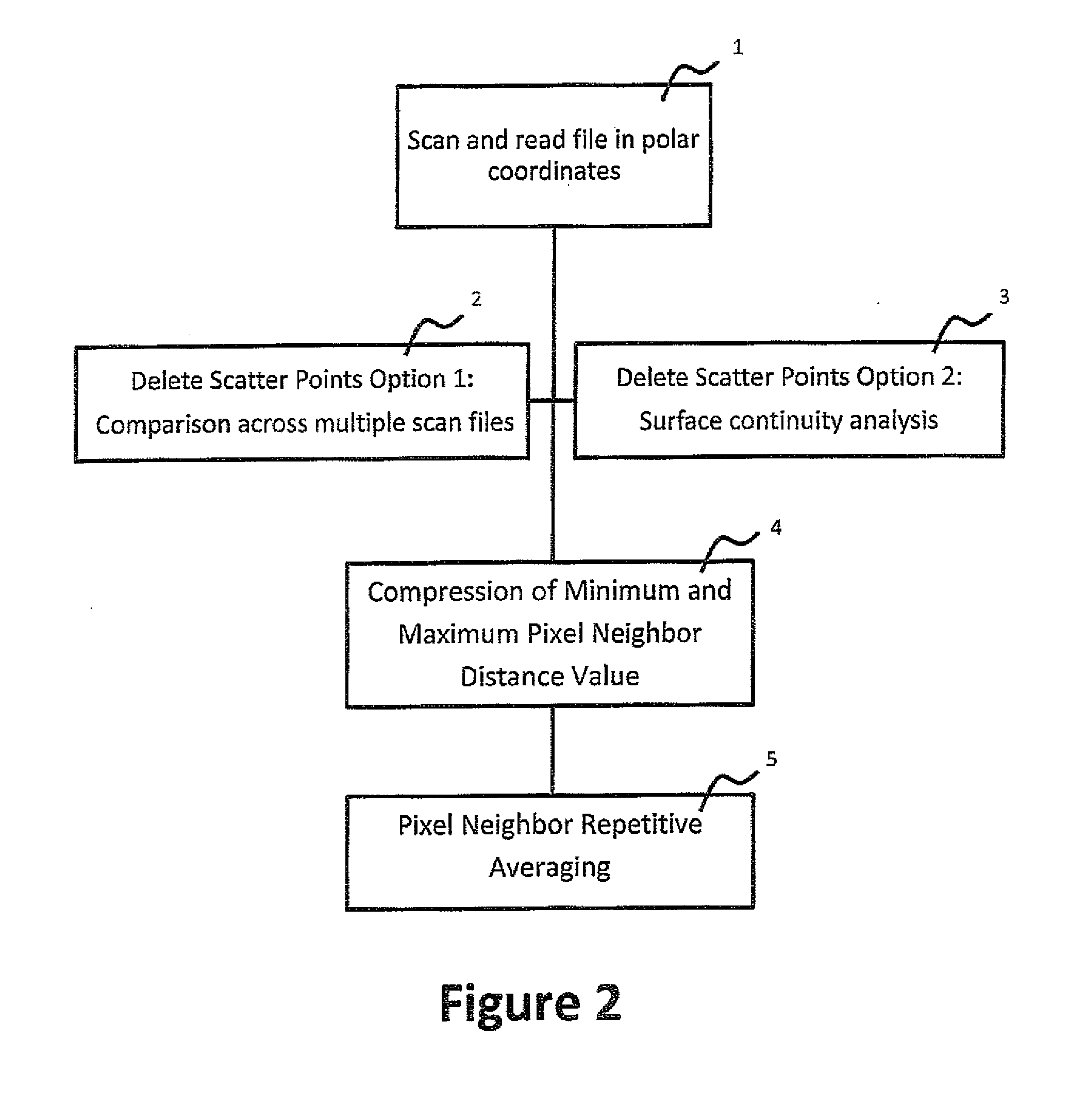Method of generating a smooth image from point cloud data
a technology of point cloud data and smooth image, which is applied in image data processing, instruments, electric digital data processing, etc., can solve the problems of distorted point cloud, little success, and inaccurate representation of the true dimensions of the actual object in the scan file obtained from the 3d scanner
- Summary
- Abstract
- Description
- Claims
- Application Information
AI Technical Summary
Benefits of technology
Problems solved by technology
Method used
Image
Examples
Embodiment Construction
[0032]Referring to FIG. 1, an image of a typical 3D spatial laser scanner 410 with a rotating head 414 comprised of two rectangular blocks 412 and 416 between which a wedged mirror 418 rotates is shown. The scanner aims a laser beam in a systematic mode of operation by the rotation of the head of the scanner in increments between two pan angle limits. The width of the scan field of view is obtained by the rotation of the head while the height of the scan field is obtained by a mirror that flips vertically. The distance value measurement is recorded as the distance between the origin of the laser and the surface of the first object within its path.
[0033]The systematic emission of millions of laser beams allows the 3D laser scanner to collate accurate measurement of distances to objects producing a 3D model often referred to as a “Point Cloud.” A typical point cloud contains “noise” which constitutes scatter points and surface roughness. Scatter points, usually observed when the angle...
PUM
 Login to View More
Login to View More Abstract
Description
Claims
Application Information
 Login to View More
Login to View More - R&D
- Intellectual Property
- Life Sciences
- Materials
- Tech Scout
- Unparalleled Data Quality
- Higher Quality Content
- 60% Fewer Hallucinations
Browse by: Latest US Patents, China's latest patents, Technical Efficacy Thesaurus, Application Domain, Technology Topic, Popular Technical Reports.
© 2025 PatSnap. All rights reserved.Legal|Privacy policy|Modern Slavery Act Transparency Statement|Sitemap|About US| Contact US: help@patsnap.com



